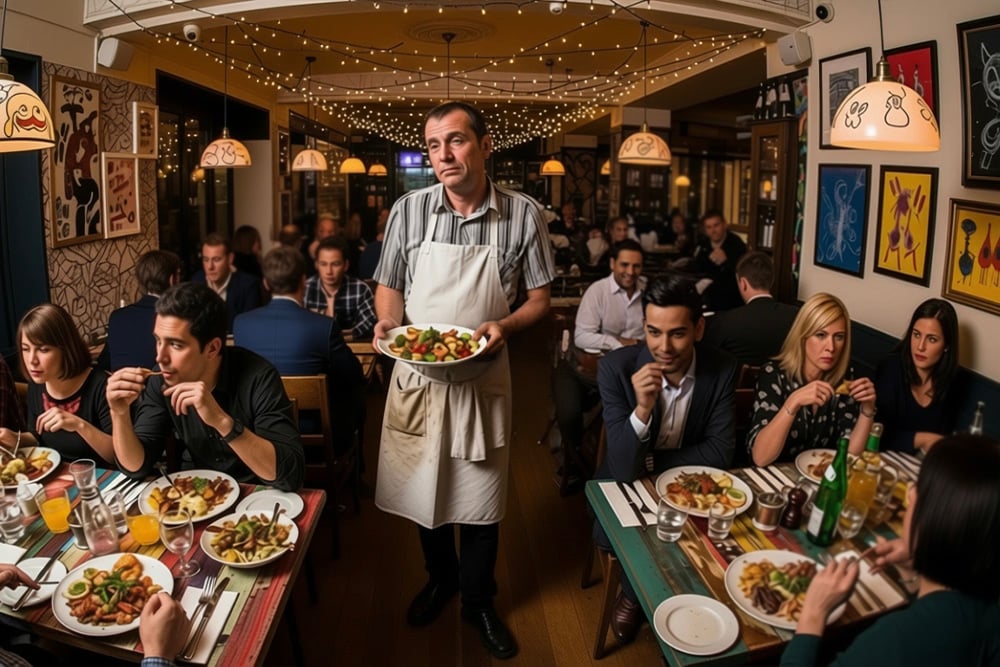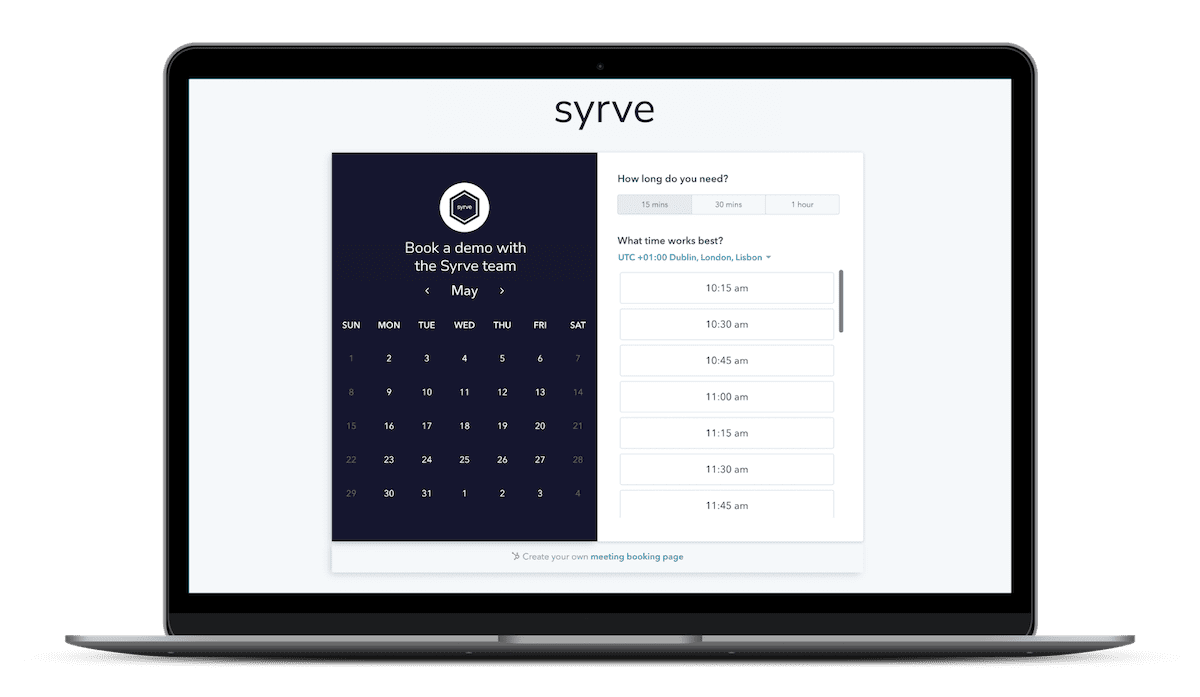Ask most other restaurant owners to tell you their main operational challenges and you’ll probably be met with lamentations about rising energy bills, food cost inflation, and high business rates. The difficulties of satisfying evolving customer expectations will crop up as well. And it’s almost guaranteed that staffing will be a big part of the conversation.
For restaurant operators, staffing issues are no short-term blip. They’re a persistent, nagging problem that’s now escalated into a fully blown industry crisis.
Fuelled by a shrinking labour pool, unsocial working hours and low pay, an interminable cycle of recruitment headaches and chronic staff turnover is now the reality for many businesses. At an operational level, these problems manifest in a number of ways, most typically:
- Overworked Teams
- Slower Service
- Declining Staff Morale
Same Old Playbook, Same Old Problems
In terms of recruitment and staff management, restaurant operators have traditionally read from the same, dog-eared playbook. It’s a playbook which prescribes a medley of half-measures for coping with staffing issues including:
- Hiring Drives for Staffing Shortfalls
- Pay Rises for Boosting Productivity
- Incentives and Bonuses to Prop Up Team Morale
- Overtime for Covering Shortages
Hiring Drives
In the restaurant sector, hiring sprees are often reactive, frantic campaigns aimed at filling positions as quickly as possible. Although the most obvious solution for plugging labour gaps, they fail to take into account the actual reasons why staff keep leaving in the first place, namely: low pay, burnout, unsocial hours and inflexible/substandard staff scheduling. By the time the recruitment process has finished, service standards have already suffered.

Pay Rises
To survive in an industry known for non-competitive wage structures, many operators will put in place salary increases to ensure productivity and to retain staff - a sensible approach you might assume given that everybody likes a pay rise.
But in reality, they’re a short term solution. While pay rises improve productivity and morale, their effect is often temporary. Workload pressures and the grind of everyday operations often cause motivation levels and productivity to revert to baseline. Ultimately, the restaurant owner ends up spending more on wages without seeing any improvement in staff performance.
Incentives and Bonuses
Like pay rises, bonuses and perks are supposed to improve morale with the intention of boosting motivation and productivity. Yet in practice, restaurant bonuses are often small and distributed inconsistently. They also do little to address operational or cultural issues within a business that have become deep-rooted. At face value they may seem like a sensible strategy. But they often serve as compensation for broken systems.
Overtime
Managers tend to view overtime as a flexible, cost-effective solution for covering staffing shortfalls. After all, getting staff to work extra hours is cheaper than recruiting and onboarding new faces. It also provides team members with the chance to earn more.
However, it’s a practice that often hides scheduling inefficiencies and substandard demand forecasting. Staff often become overworked, burnt out and disengaged. Productivity then drops just as labour costs begin to climb.
Why Do Traditional Strategies No Longer Work?
The traditional restaurant staff management strategies outlined above are no longer as effective as they once were. This is largely for two reasons.
First, their reactive nature is being exposed by a far more hostile trading environment. Second, the expectations of modern restaurant staff have evolved, making old incentive-based models and strategies increasingly obsolete. Moreover, the operational deficiencies that undermine each, have become front and centre.
Why Tech is Now Critical
The use of technology throughout the hospitality sector is well-documented and the benefits far-reaching. But these tools are no longer nice-to-haves. They’ve become critical for restaurant operators, none more so in the realm of staffing, recruitment and management. To illustrate this, let’s revisit the challenges outlined in the opening bullet points of this article and explore how technology can help address each one.
Overworked Teams - How Tech Helps
While little can be done about external staffing pressures, technology has the potential to ease workloads and streamline the everyday, through automation and some remarkably powerful tools:
Smart Staff Scheduling - enables operators to align labour with demand. Overstaffing and understaffing can therefore be avoided, which gives managers far greater control over labour efficiency, team balance and, ultimately service quality.
Precise Forecasting - leverages historical data using advanced algorithms to deliver precise sales forecasts (up to 98% with Syrve). Factoring in external events and previous data, it allows operators to prepare teams for demand spikes and events that have the potential to stretch staff.
Automated Tasks - removes the burden of repetitive processes that drain time and energy. Routine processes such as reporting, supplier management and stock counts are either automated or require minimal human input; for example, automatic purchases, prep plans and recipe adjustments.

Slow Service - How Tech Helps
The front of house and kitchen are of course where most of the action happens in a busy restaurant. Servers are constantly catering to the whims and expectations of guests, while in the kitchen, teams are working flat out to meet demand. It’s these operational areas where service gets bogged down. But it’s also where tech can help the most:
Integrated POS Systems - allow servers to check order progress on-screen, eliminating the need to chase up orders and distract kitchen teams. Traditional frictions between front and back of house are dramatically reduced and service optimised, from kitchen to table.
Flexible POS Software - digitises table ordering by porting POS functionality to tablet and smartphone devices. Order processing bottlenecks at fixed terminals are eliminated and errors reduced, while table turning is increased.
Order Injection - orders from third-party delivery and external sources are injected directly into production pipelines without the need for proprietary ordering tablets. Order-taking is therefore simplified at the point of sale while kitchen staff can start preparing orders the moment they come in.
Unified Orders and Payments - combine order-taking and payment on a single terminal, so staff no longer need to wait for a card machine to become available. This saves valuable time, speeds up table turns, and keeps service flowing smoothly.
Advanced KDS Systems - replace outmoded ticket-based methods with a digitised system that displays orders in real time, as they come in from front of house. Precise information about modifiers, special requests and progress is displayed which improves order accuracy and speed.
QR Code Ordering - frees up staff to focus on other tasks by enabling guests to browse their menus and order from their table.
Declining Staff Morale - How Tech Helps
Restaurants are traditionally difficult, high-stress environments to work in, no matter the state of the industry. If you consider uncompetitive salaries, understaffing and demanding customers, it’s of little surprise that turnover rates are so high. Realistically, there’s no sure fire way of eliminating staff churn completely. But it is possible to reduce it:
Goal Setting Systems - provide tangible goals for front-of-house staff such as leader-boards that rank employees according to items sold, total revenue generated, total upsell, and average spend. An effective way of improving both motivation and sales.
Personal Employee Pages - facilitate two-way communication between managers and front-line staff with live company feeds and push notifications as well as easy access to rotas and performance data. This level of transparency helps bridge the gap often created by top-down communication.
Intuitive Systems - enable new starters to learn quickly and contribute to the team from day one. By simplifying everyday workflows and providing clear, guided processes, new employees can build confidence faster.

Final Thoughts
Unfortunately, the staffing crisis isn’t going away any time soon. Rising labour costs, persistent churn and stealth taxes will likely plague the industry for the foreseeable future. This means that tech adoption is the only sustainable path for restaurant operators. Those that embrace smarter systems will be more competitive and profitable. Those that fail to adapt will fall behind and put their very survival at stake.



